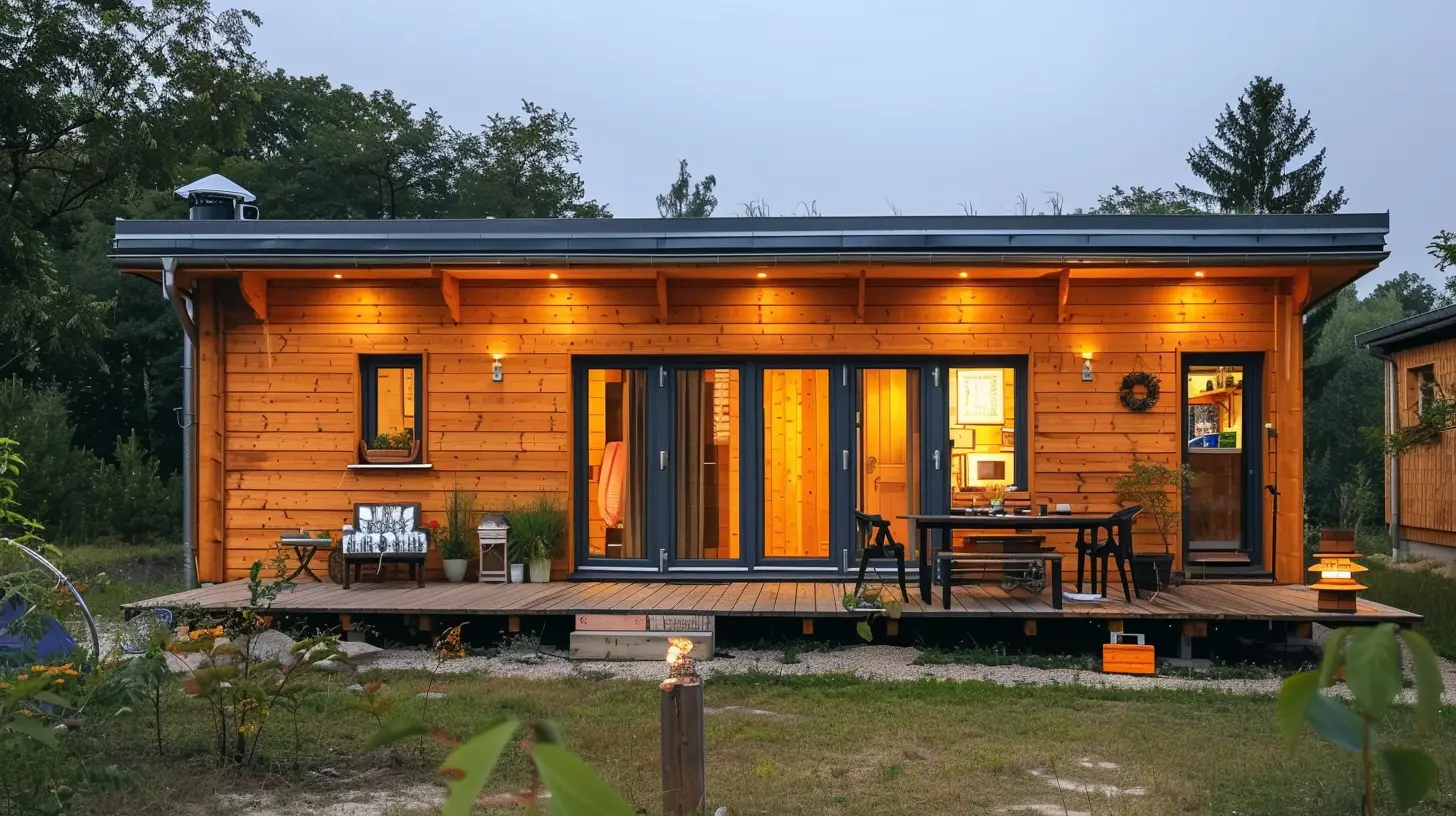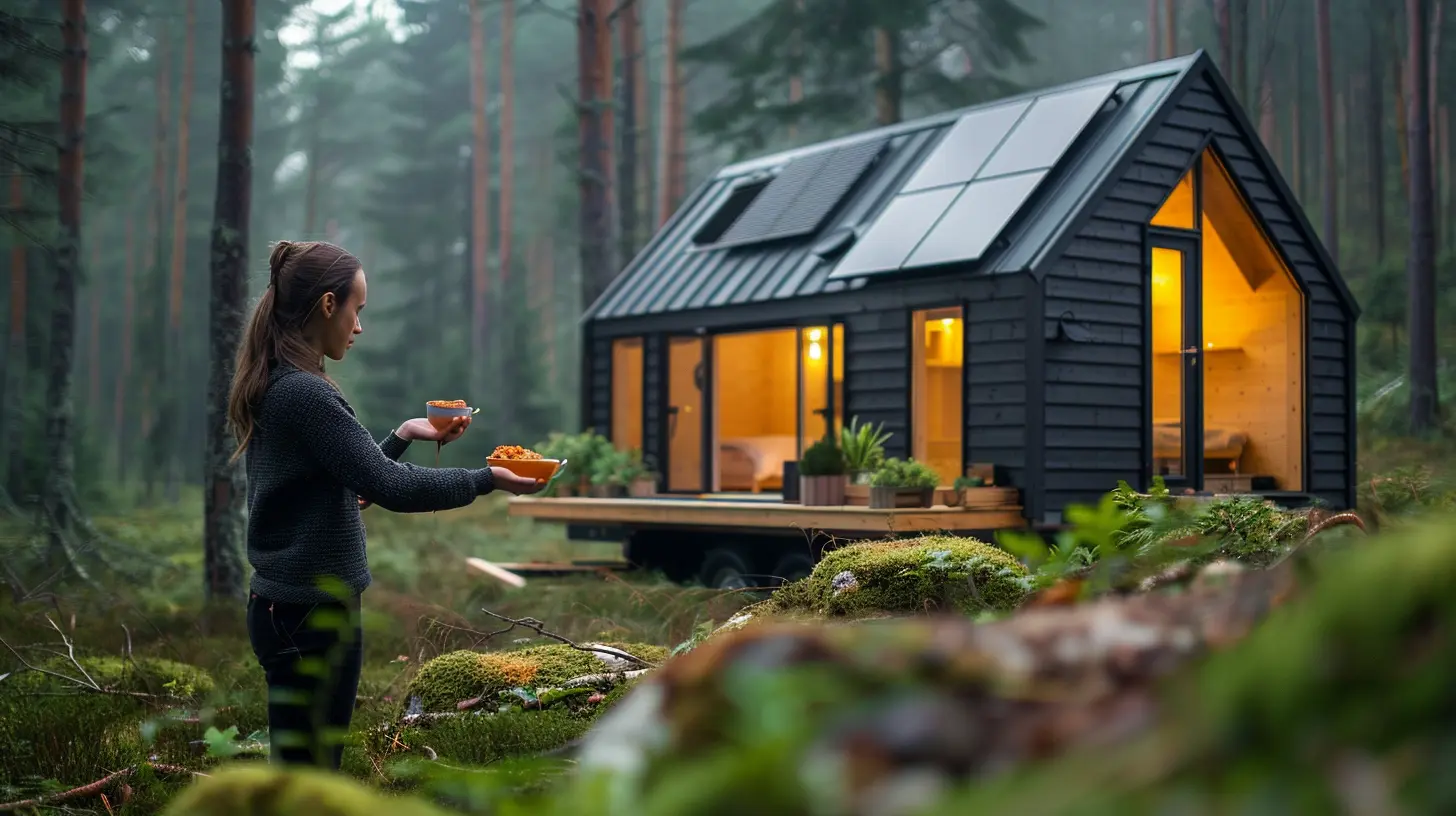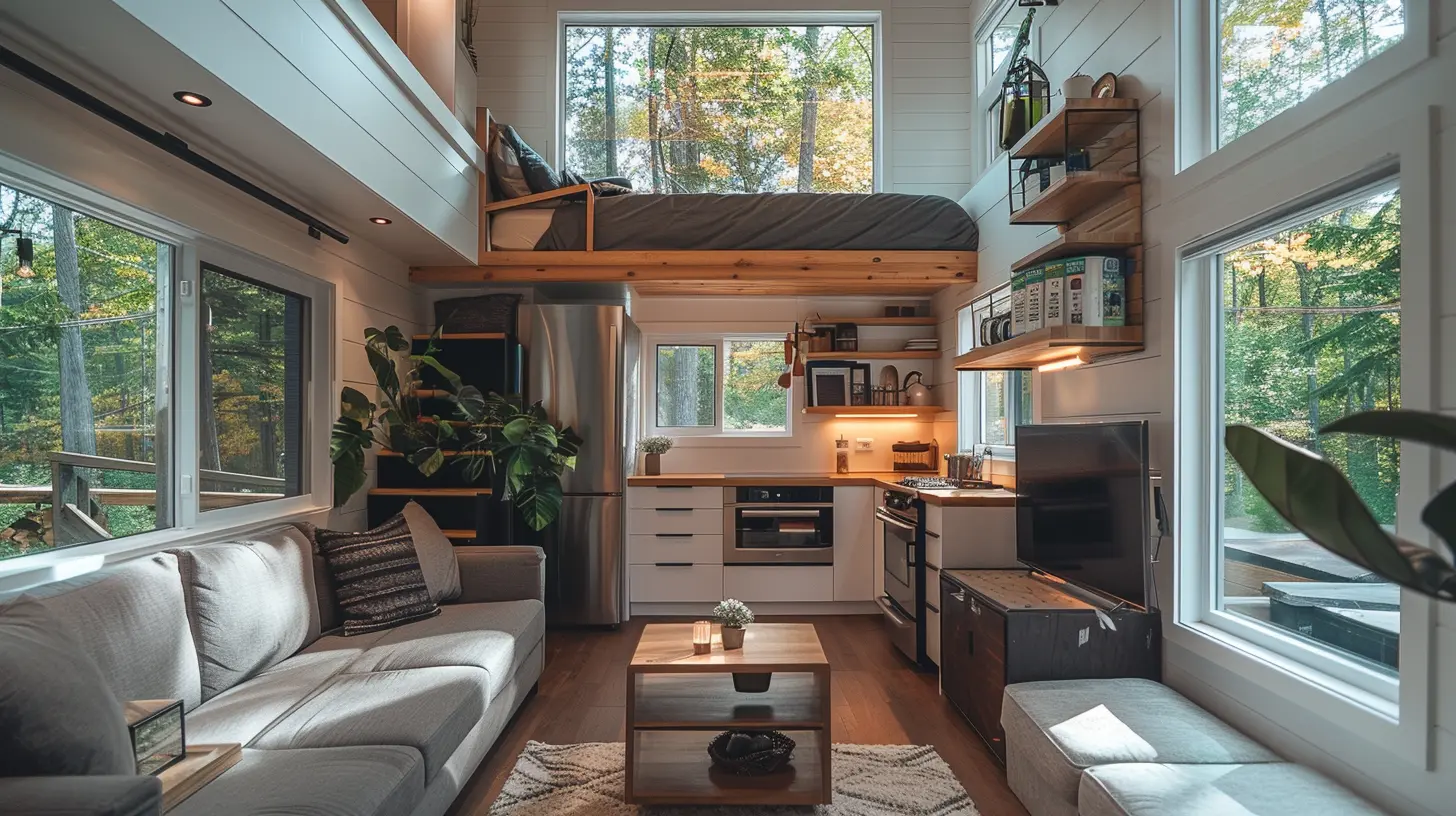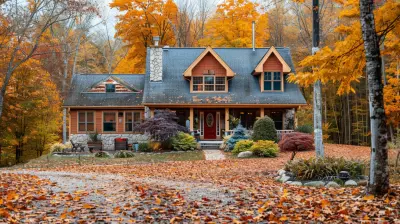Heating and Cooling Solutions for Tiny Homes
7 November 2025
Tiny homes—those charming, minimalist abodes that have taken the world by storm—offer plenty of benefits: lower costs, less maintenance, and the undeniable joy of living a clutter-free life. But let’s be honest—keeping such a small space at the right temperature can sometimes feel like an Olympic sport.
One minute, you're sweating like you're in the Sahara; the next, you're bundled up like an Antarctic explorer. So, how do you strike that perfect balance without throwing your off-grid dreams (or electricity bill) into chaos? Let’s break it down. 
Why Heating and Cooling a Tiny Home Is Tricky
In a traditional house, HVAC systems work with ample space to circulate air efficiently. But in a tiny home, you don’t have the luxury of extra square footage—one strong gust from a space heater can leave you feeling like a marshmallow too close to the campfire.Plus, tiny homes often have unique structures. Many are built on trailers, making insulation more challenging. Others rely on solar power, meaning an energy-guzzling AC unit is out of the question.
But don't sweat it (or freeze up) just yet! There are plenty of clever ways to keep your tiny home cozy in winter and refreshingly cool in summer—without draining your wallet or your sanity. 
Heating Solutions for Tiny Homes
Let’s start with the chillier months—because there’s nothing worse than waking up to find your breath visible in the air.1. Mini Split Heat Pump – The Tiny Home MVP
If tiny homes had a Hall of Fame, mini-split heat pumps would be in it. These units work as both a heater and an air conditioner, meaning you get year-round comfort with one device.Pros:
✅ Super energy-efficient
✅ Offers heating and cooling in one system
✅ Runs quietly (no noisy blowers here!)
Cons:
❌ Higher upfront cost
❌ Requires professional installation
If you're planning to live in your tiny home year-round and want a reliable heating and cooling solution, this is a solid investment.
2. Wood Stove – Rustic and Cozy
Nothing beats the charm of a crackling wood stove. It turns your tiny home into a cozy cabin, all while keeping energy costs low. Plus, if you're living off-grid, this is a fantastic option.Pros:
✅ Extremely effective heat source
✅ No electricity required
✅ Provides a cozy, old-school ambiance
Cons:
❌ Requires firewood (and regular chopping if you’re going full lumberjack mode)
❌ Needs proper ventilation to avoid smoke buildup
If you don’t mind tending to a fire and enjoy the aesthetics of a tiny-home-meets-log-cabin vibe, a wood stove is a fantastic choice.
3. Propane Heaters – Warmth on Demand
Portable propane heaters are a favorite among van-lifers and tiny homeowners who want an instant heat boost. They’re compact, efficient, and don’t require electricity.Pros:
✅ Affordable upfront cost
✅ No power needed
✅ Quick heat output
Cons:
❌ Can create moisture buildup
❌ Requires proper ventilation to prevent carbon monoxide risks
Propane heaters can be a great backup heat source, but always prioritize safety—crack a window and use a carbon monoxide detector to keep things safe.
4. Electric Space Heaters – Budget-Friendly and Easy
If you’re connected to the grid, an electric space heater is the easiest and cheapest way to heat your tiny home. Just plug it in, turn it on, and bask in the warmth.Pros:
✅ Affordable initial cost
✅ No installation required
✅ Portable—move it wherever you need heat
Cons:
❌ Can be energy-hungry
❌ Not ideal for off-grid homes
These are great for quick, on-the-spot heating, but they work best as a supplemental heat source rather than your primary one. 
Cooling Solutions for Tiny Homes
Now, let’s talk about cooling—because nothing makes tiny living unbearable faster than a tiny home turning into a sauna.1. Mini Split AC Unit – Best of Both Worlds
Remember the mini-split heat pump we mentioned earlier? Well, it also works as an air conditioner! It’s a one-and-done solution for both heating and cooling.Pros:
✅ Highly efficient
✅ Cools a space evenly
✅ Quiet operation
Cons:
❌ Initial installation cost can be pricey
❌ Needs an external condenser unit (which requires space)
If your tiny home is in an area with extreme summer heat, this investment is worth every penny.
2. Ceiling Fans – Old-School Cool
Never underestimate the power of a ceiling fan. These energy-efficient wonders improve air circulation and keep your tiny home from feeling stuffy.Pros:
✅ Uses minimal electricity
✅ Helps distribute air evenly
✅ Affordable
Cons:
❌ Doesn’t actually lower the temperature—just makes it feel cooler
❌ Requires ceiling space (which can be tricky in super compact homes)
Pairing a ceiling fan with other cooling methods (like open windows or a mini-split system) can work wonders.
3. Portable AC Units – Convenient and Powerful
Portable AC units are the go-to for tiny home dwellers who need cooling without major installation. Just plug it in, run the exhaust hose out the window, and you're good to go.Pros:
✅ No installation needed
✅ Provides immediate cooling
✅ Can be moved around as needed
Cons:
❌ Takes up floor space
❌ Can be noisy
If you’re renting your tiny home or need a quick and flexible cooling solution, this is a fantastic option.
4. Evaporative Coolers (Swamp Coolers) – Budget-Friendly Chill
Swamp coolers are perfect for dry climates. They use water evaporation to create cool air, making them super energy-efficient.Pros:
✅ Low electricity consumption
✅ Great for hot, dry environments
✅ Adds humidity (which is a bonus in desert regions)
Cons:
❌ Not effective in humid areas
❌ Requires regular water refills
If you're in a dry climate, these work wonders. But if you're in a humid location? Not so much. 
Bonus Tips for Efficient Temperature Control
Regardless of which heating or cooling system you choose, here are a few game-changing tricks to help maintain a comfortable temperature in your tiny home:- Insulation is everything – Proper insulation keeps heat in during winter and out during summer. Don't skimp on it!
- Strategic window placement – Orienting windows for natural cross-ventilation can help with cooling.
- Thermal curtains – These block excessive heat in summer and retain warmth in winter.
- Use light-colored roofing – Reflects heat instead of absorbing it.
- Install a programmable thermostat – If you have an electric heating/cooling system, this will help maintain an ideal temperature without wasting energy.
The Bottom Line
Keeping a tiny home at the perfect temperature isn’t impossible—it just takes a little creativity and the right setup. Whether you go high-tech with a mini-split system or embrace the old-school charm of a wood stove, there's a heating and cooling solution out there that fits your needs.So, as you embark on your tiny home adventure, remember: a comfortable tiny home isn't just about downsizing your space. It’s about maximizing your comfort, too!
all images in this post were generated using AI tools
Category:
Tiny HomesAuthor:

Kingston Estes
Discussion
rate this article
1 comments
Beau Maddox
Thank you for highlighting the importance of heating and cooling in tiny homes. These efficient solutions can significantly enhance comfort and quality of life in limited spaces. It's inspiring to see how thoughtful design can create cozy environments, making tiny living both practical and enjoyable.
November 11, 2025 at 5:16 AM

Kingston Estes
Thank you for your thoughtful comment! I'm glad you found the article inspiring—efficient heating and cooling truly make a big difference in tiny living.


